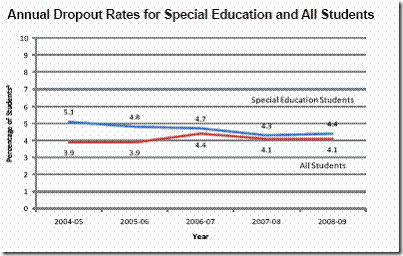Op-Ed By Patrice Apodaca in the Newport Beach Daily Pilot | http://bit.ly/rToTZI
December 31, 2011 | 6:49 p.m. :: By many measures, 2011 was a momentous year.
Osama bin Laden was finally tracked down and killed. The Arab Spring uprisings toppled ruthless regimes. The Eurozone's unity was sorely tested. The Occupy protest movement swept across America.
Closer to home, Costa Mesa became a key battleground in the municipal belt-tightening wars. The Newport-Mesa public schools chief was charged with three felony counts that could send him to jail. And a group of teenagers launched an effort to preserve a cherished local icon, the Balboa Fun Zone.
2012 will be another year of great import, for no other reason than it is an election year. That voters are discontented is not in question; only the outcome of their response to that frustration remains to be seen.
But if this is destined to be a pivotal year, I put to readers that they must consider one issue above all others: the fate of our public schools.
The situation bears reviewing. California schools, from primary grades to public universities, were once the envy of the world. They created generations of well-educated workers, bolstered the economy, pushed living standards higher, and burnished the reputation of the Golden State.
Those days are long gone.
Our public school system is in shambles, with ratings and per-student spending near the bottom of the education barrel. Districts throughout the state are on the brink of insolvency. Programs have been eliminated, departments reduced to bare-bones status, and classrooms packed beyond capacity. Staff members take on extra work for no extra pay; teachers buy supplies with their own money.
Even the vaunted University of California system, long considered the crown jewel among public universities, is collapsing under the strain of funding cutbacks, creating the bitterest of ironies: California kids who can't afford to attend the schools that were built for them.
Absent a sudden reprieve, it's all about to go from bad to worse.
The state's dire financial condition, coupled with a dispiriting lack of spine by our leaders, could force another round of cutbacks in our schools. That would be akin to attaching blood-sucking leeches to a critically ill patient.
Even recent glimmers of hope are tinged with desperation. California faces a $13-billion budget deficit, but year-end revenues were strong enough to dodge automatic cuts that would have resulted in the hacking a week off the K-12 school year.
Yet so much is teetering on the knife-edge of brinkmanship being played out in Sacramento. Gov. Jerry Brown has said that education funding would be preserved, even increase if — a big if — voters pass his initiative to raise some taxes.
The governor's plan is a risky end run around Proposition 13's two-thirds legislative vote requirement for tax increases.
Other initiatives being floated by various interests ostensibly would raise money for schools; they run the danger of canceling each other out at the ballot box.
Meanwhile, Orange County officials have announced plans to take $73.5 million in tax dollars that are supposed to go to local schools. They say they have no choice, because without the school money, they won't be able to balance the county's budget and pay its bills.
It's a big, fat, stinky mess, and here in Newport-Mesa, school officials are holding their collective breath and hoping the stench will subside before they have to make more unpleasant choices.
So far, Newport-Mesa schools have been spared the worst of the budget cuts seen in many districts throughout the state, mainly because district officials pinched pennies in years past, which they kept in a reserve fund. Along with some cost-saving measures, they've raided the piggy bank to get us through to this point.
Those officials have warned repeatedly that the piggy-bank rescue is no longer an option, and this year a budget squeeze could lead to cutbacks galore. That noise you hear is the chilling sound of knives being sharpened.
Let me pause for a moment here and acknowledge that Supt. Jeffrey Hubbard's legal troubles have further muddied the waters for the district at a time when strong leadership is needed. And amid the budget worries, the school board injudiciously granted Hubbard a long paid leave last year to deal with said troubles. Badly done.
But the Hubbard sideshow shouldn't distract from the paramount issue: We must save our schools.
Long before I was born, my parents moved across the country, lured by California's golden promise of sunshine and prosperity. My mother became a public school teacher — a darn fine one, I might add — and my siblings and I were fortunate indeed to grow up in the California public school system.
I believe my career as a journalist was born in those early years, when I developed a love of reading and a thirst for knowledge.
Last year, citizens of the world rose up against oppression, injustice and a sense that their political and economic systems had betrayed them. Let us now channel the same kind of energy, put aside our differences, and insist that education not be sacrificed on the altar of political discord.
Like my parents before me, I wish to fulfill the promise we should always keep to our children, and our children's children; that when it was hard, we chose to give them hope for the future. We chose to make schools our top priority, and give them the education they deserve.
- PATRICE APODACA is a Newport-Mesa public school parent and former Los Angeles Times staff writer. She is also a regular contributor to Orange Coast magazine and the Daily Pilot. She lives in Newport Beach.







![clip_image001[6] clip_image001[6]](http://lh3.ggpht.com/-YNjC--lN_Ak/TvzWwL6CanI/AAAAAAAACPo/P8jTrswXsrU/clip_image001%25255B6%25255D%25255B4%25255D.jpg?imgmax=800)




